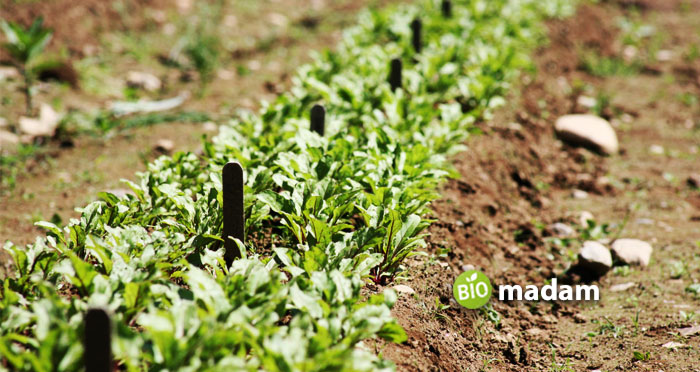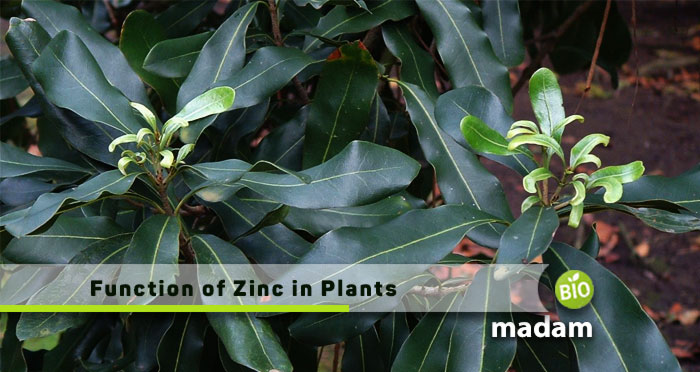The global flora includes millions of species and subspecies of plants that are either vascular or non-vascular. These multicellular living organisms have a crucial role in creating the food chain, thus food web in our ecosystem. Plants mainly function to provide oxygen in the surrounding environment. But have you ever wondered what makes plants grow and flourish? It all comes down to the complex combination of macro and micronutrients. Plants get their nutrients from the soil, which also contains minerals, and zinc is one of them. They can’t grow or develop properly without zinc. The lack of zinc can restrict plant development because of its requirement in various processes, such as photosynthesis and hormone communication.
Let’s tell you about the functions of zinc in plants in detail.
What is Zinc?
Zinc is a transition metal in the periodic table, represented by Zn. It belongs to Group 12 and has an atomic number of 30. Zinc is solid at room temperature and has applications in different branches of biology and industry. It is one of the elements essential for living organisms besides its applications in the manufacturing industry.
Functions of Zinc in Plants

Zinc is an essential element and building block for a plant’s growth and development, influencing everything from its stem strength to the vibrant color of its different leaves. It is vital for many biochemical processes. Plants require small amounts of zinc, but plant vitality and harvest decline without sufficient zinc.
Enhance Growth and Development through Enzymes Activation
Zinc is vital in activating a variety of enzymes crucial to plant development and metabolism. Activation of enzymes like RNA polymerases, superoxide dismutase, alcohol dehydrogenase, carbonic anhydrase, protein synthesis, and carbohydrate, lipid, and nucleic acid metabolism are a few plant metabolic processes that require zinc.
Stabilization of Cell Membrane
In addition to its enzymatic functions, plants rely on zinc to regulate nutrient and water absorption because it stabilizes and strengthens plant cell membranes.
Boost Photosynthesis and Other Activities
The chloroplasts of plants also depend on zinc for proper development. It plays a role in producing chlorophyll, the green pigment in plants necessary for photosynthesis. Besides the rate of photosynthesis and chlorophyll content, the carbonic anhydrase activity and protein biosynthesis also depend on zinc’s appropriate range. Zinc ions are essential components of the Zinc family of transcription factors, regulating cell proliferation and differentiation.
Prevent Diseases and Stress
Zinc also improves plant resistance to biotic and abiotic stress factors. Plants lacking zinc are more vulnerable to various stresses, including disease, pests, and environmental factors like drought, high temperature, and heavy metal toxicity.
Researchers have discovered a correlation between higher plant growth and lower susceptibility to pathogens in Zinc-efficient genotypes. It suggests that these plants are naturally more disease-resistant.
Increase Crop Production
Zinc plays a crucial role in the growth of flowers and fruit, and it also improves the size and quality of the crops. Zinc has positive effects on humans as well; using zinc fertilizers on your plants and vegetables can boost crop yield and favor your family’s health.
Release of Hormones
Zinc helps control the levels of plant hormones like auxin, gibberellins, and cytokinins that contribute to various life processes. Cell division, elongation, and differentiation are common plant development processes governed by these hormones.

Zinc’s Tolerable Limit and its Effects
Zinc levels in plant tissue should be between 15 and 60 ppm, and in the growing medium, they should be between 0.1 and 2.0 ppm. Zinc is a recommended micronutrient in fertilizer programs for optimal results when growing crops like corn, sweet corn, and edible beans.
Its deficiencies can cause stagnant growth, discolored upper leaves, and plant distortion. Although toxic zinc levels are uncommon, they negatively impact crop yield and quality when they do occur. One must fix defects or toxicity before they cause permanent damage to the crop.
The Bottom Line
Zinc is an important element for living organisms and is critical to plant health and yield. It is crucial in activating enzymes that contribute to plant growth and cellular functions. This micronutrient also stabilizes and strengthens the cell membrane. An adequate amount of zinc is also critical to maintaining the yield and increasing crop production.
FAQs
What is the role of Zn in photosynthesis?
Zinc is critical to photosynthesis in plants as it maintains chlorophyll content and facilitates carbonic anhydrase activity. Zinc deficiency may lead to a decreased photosynthetic rate, protein biosynthesis, activity of carbonic anhydrase, and chlorophyll content.
What is the role of zinc and magnesium in plants?
Zinc and magnesium play vital roles in plant growth and crop yield. Their contribution affects the metabolism of macronutrients like different types of proteins, fats, and carbon.
What are the benefits of zinc fertilizer for plants?
Zinc is an important part of plant fertilizers as it promotes metabolic activities, critical to plant growth in the early years. When adding zinc fertilizer, you must maintain the soil pH as a high pH impacts zinc availability.

Hello, I would like to introduce myself to you! I am Chelsea Rogers, an experienced blog writer for science articles, holding an MPhil degree. My enthusiasm to grab the best knowledge, let it relate to botany, zoology, or any other science branch. Read my articles & let me wait for your words s in the comment section.

